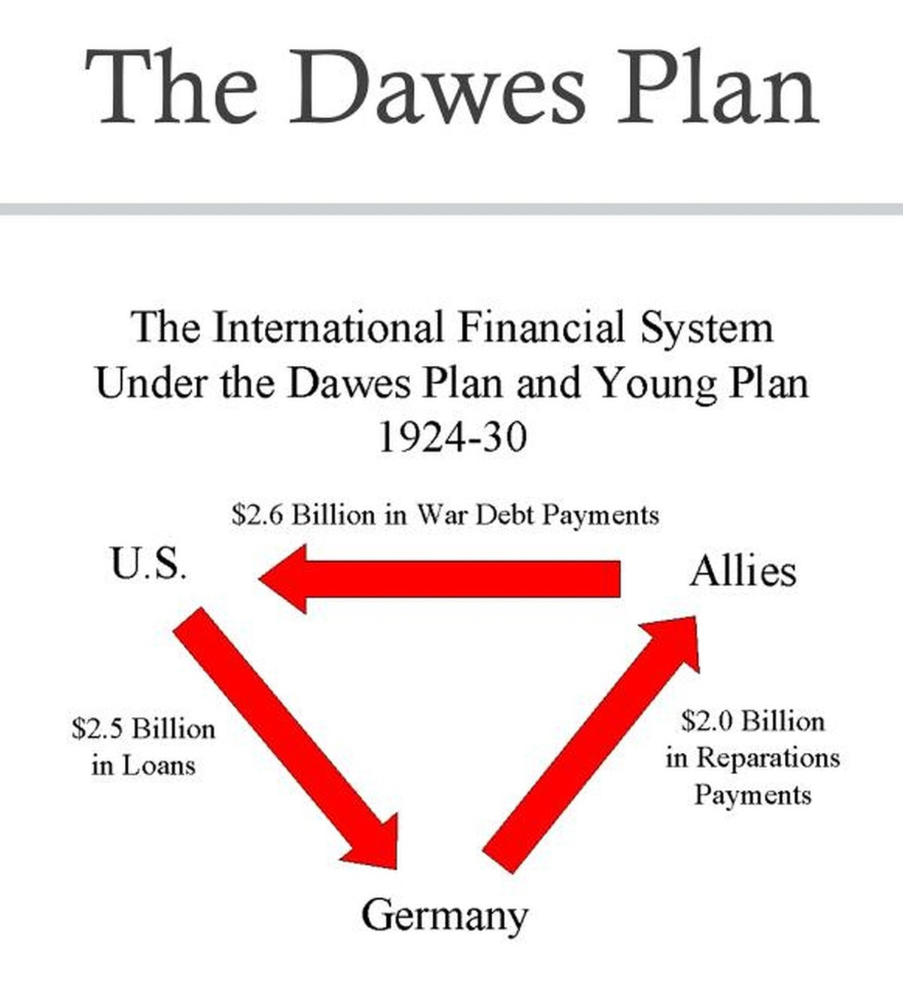Definitions
Background of the Dawes Plan
Reason for Allied Involvement
The instability of the German economy and its inability to pay reparations raised concerns to the Allies. They called Charles G. Dawes, an American banker to resolve this issue. He came up with the Dawes Plan which was a step in economic recovery and made the French leave the Ruhr helping Germany to pay reparations and improve it’s economy.
Implementation of the Dawes Plan
The Dawes Plan, named after U.S. Vice President Charles Dawes who chaired the committee, was proposed to alleviate the financial burden on Germany while ensuring reparations payments continued. The plan restructured the schedule of reparations, making payments more manageable, and involved a series of loans from American banks to stabilise the German currency and inject capital into the economy.
Impact of Dawes Plan on the German Economy
Through the Dawes Plan, substantial US loans and the reduction of reparations to $50 million a year facilitated a period of relative economic stability and growth in Germany during the mid-to-late 1920s. Infrastructure projects and industrial expansion were funded through these loans, which helped to reduce unemployment, restored confidence in the economy and doubled industrial output. As a result, Germany began to re-emerge as a new nation and restore the faith in the Weimar Republic.
Limitations and Criticism
Despite its initial success, the Dawes Plan faced criticism and limitations. Extremists argued that the plan made Germany heavily dependent on foreign loans, particularly from the US, creating an unsustainable economic model. The reliance on foreign aid made the German economy vulnerable to losses in the global stock market, shown during the Wall Street Crash which worsened Germany’s economic situation.
To remember :
The Dawes Plan was a pivotal moment in post-World War I recovery, as it illustrated the impact of US economic might on international affairs. It provided a temporary solution to Germany's reparations dilemma and revitalised its economy through American loans. However, the dependency on foreign capital revealed the plan’s weaknesses, and put Germany into an even worse situation.

Cycle of Dawes Plan

